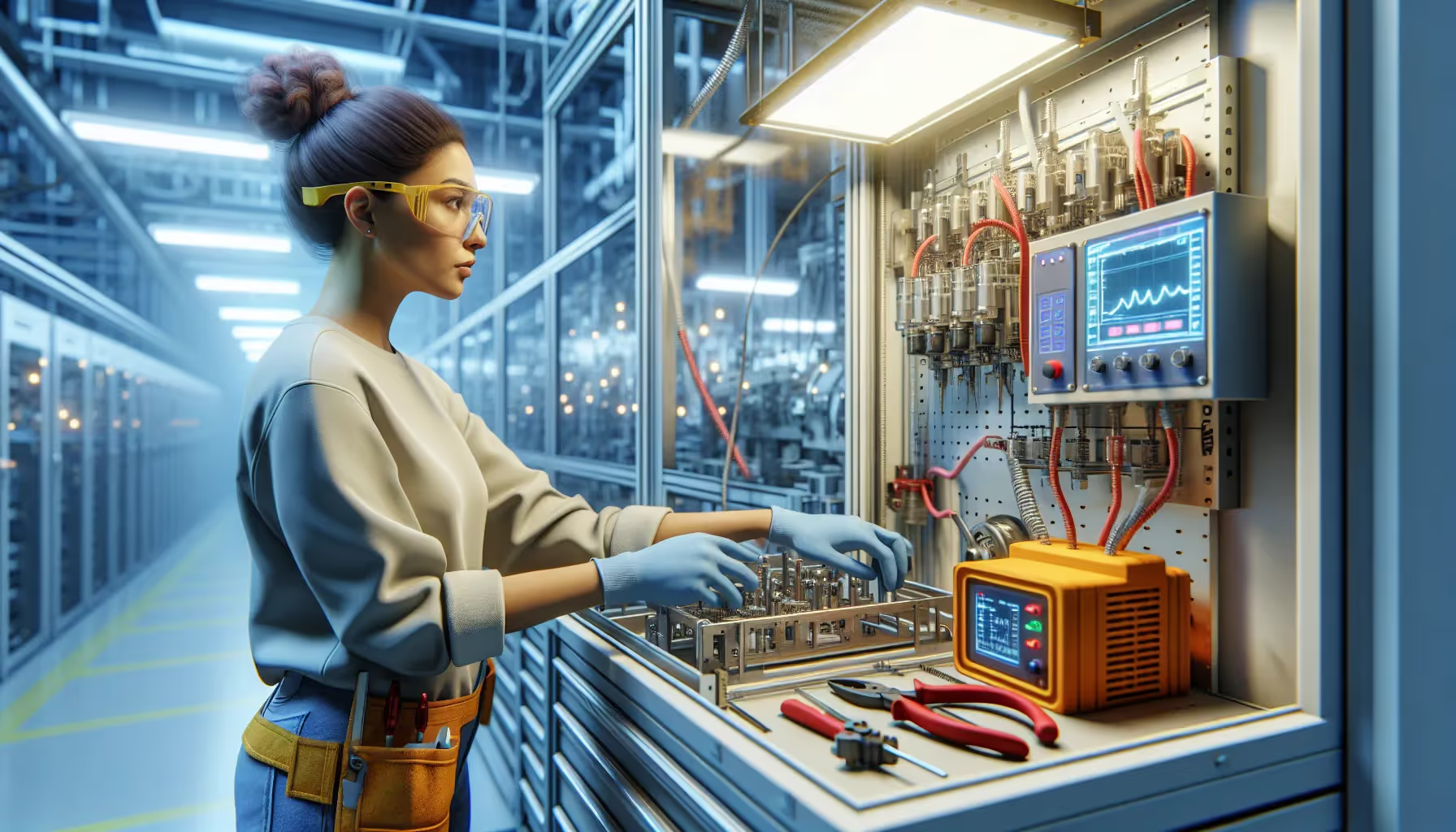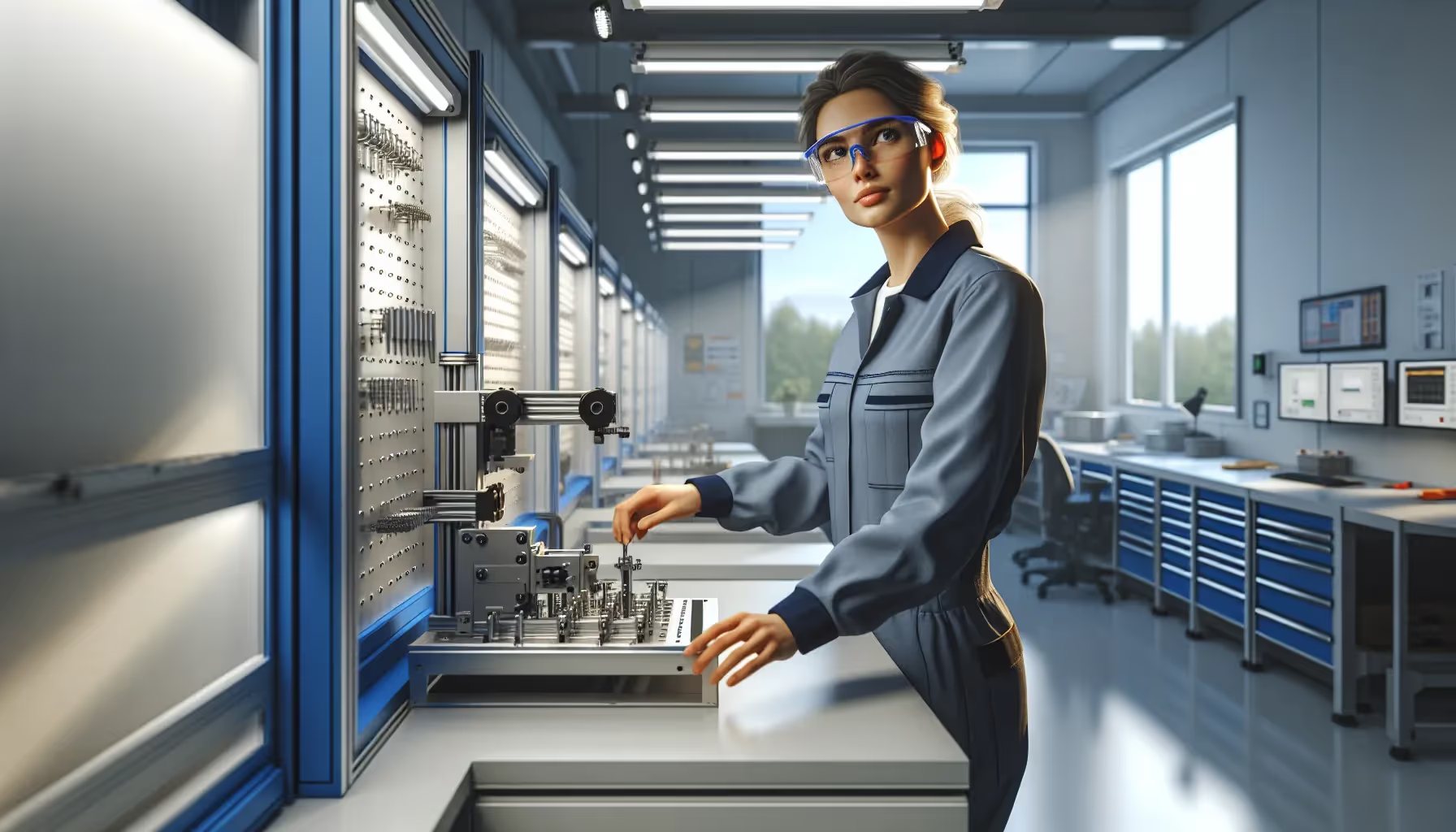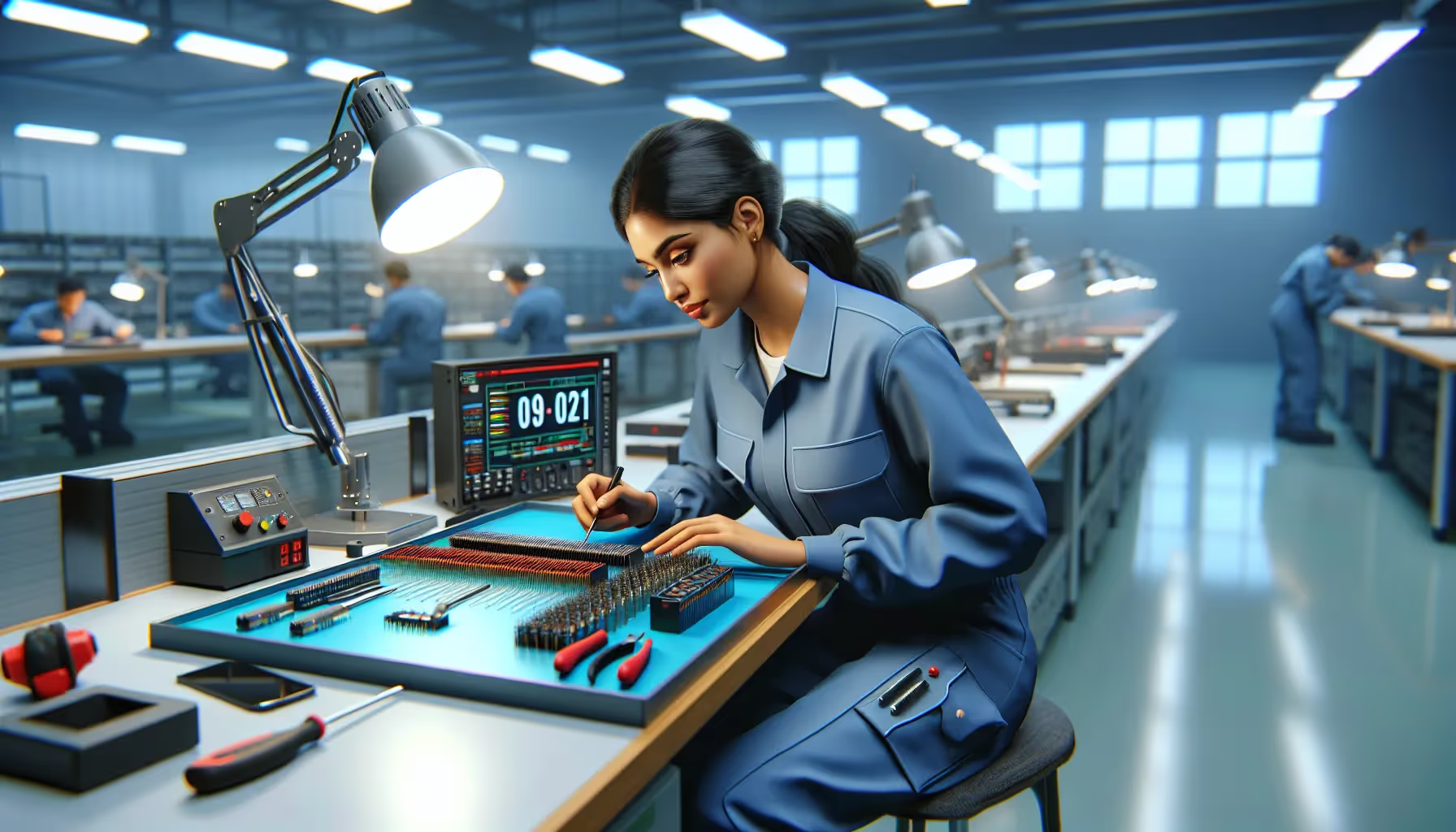Key Takeaways
- Significance of Environment: The physical workspace significantly impacts technician performance, with approximately 70% of technicians stating it affects their productivity.
- Critical Factors: Key elements influencing performance include temperature (ideal range 68°F to 72°F), noise levels, lighting quality, air quality, and ergonomics.
- Enhancing Ergonomics: Implementing ergonomic workspace designs and tools can minimize strain and increase comfort, leading to improved efficiency.
- Noise Management: Reducing noise through sound-absorbing materials and noise-canceling gear can enhance focus and productivity for technicians.
- Lighting Optimization: Proper lighting is essential for detail-oriented tasks; adjustable and glare-free lighting improves accuracy and reduces eye strain.
- Technology Integration: Utilizing field service management software and environmental monitoring tools can streamline operations, optimize work conditions, and boost technician engagement.
The physical environment plays a crucial role in technician performance, often making the difference between a job well done and one that falls short. Studies show that nearly 70% of technicians report that their work environment directly affects their productivity. Factors like lighting, temperature, and workspace organization can either empower or hinder their efficiency.
By understanding these environmental influences, we can implement strategies to enhance technician performance. Simple changes, such as optimizing workspace layouts or improving access to tools, can lead to significant improvements in job completion times and overall satisfaction. Let’s explore how we can create a more supportive environment that not only boosts productivity but also fosters a happier, more engaged workforce.
Overview of Technician Performance
Technician performance relies heavily on the physical environment. Studies show nearly 70% of technicians feel their workspace influences their productivity. Factors like lighting, temperature, and organization play crucial roles in their effectiveness. Improving these elements can lead to significant gains in performance.
Lighting affects technicians’ ability to see details, especially in complex tasks. Proper lighting helps them focus, enabling efficient task completion. Are your workspaces well-lit? Ambient and task lighting can enhance visual clarity and prevent strain.
Temperature is another critical aspect. Extremes in temperature can decrease energy levels. A comfortable temperature ranges from 68°F to 72°F. Do we consider thermal comfort when organizing our workspaces? It’s essential for maintaining high energy and morale.
Workspace organization impacts how technicians access tools and equipment. A disorganized area can waste valuable time. By utilizing mobile workforce management strategies, such as tool partitioning and labeling, we can optimize efficiency. Have we implemented these practices in our daily routines?
One solution to enhance performance is through the use of field service management software. This software simplifies technician scheduling, optimizing routes for efficiency. With job scheduling software for technicians, we can minimize travel time and keep customers satisfied with timely service. Isn't that what every technician strives for?
Automated field service solutions can also benefit both management and technicians. These solutions streamline processes, allowing dispatchers to focus more on performance enhancement instead of micromanagement. We all love a little less paperwork, right?
Moreover, technician route optimization tools can contribute greatly to job success. By calculating the most efficient routes, technicians reduce fuel costs and travel time. Who wouldn’t want to spend less time on the road and more on fulfilling customer needs?
Moreover, service business automation can improve engagement. Keeping track of service invoicing and customer interactions helps maintain a professional image. A solid field service CRM can help us manage relationships and keep work flowing smoothly.
Engagement matters. When technicians feel supported, their performance improves. Implementing service business growth tools fosters a sense of community within our teams. Funny how a little support can drive success.
Let’s reflect—what changes can we make to improve our environment? How can we enable our technicians to perform at their best? By asking these questions, we invest in their success and, ultimately, our own.
Importance of the Physical Environment

The physical environment directly affects technician performance, impacting productivity, morale, and overall well-being. Creating a suitable workspace contributes significantly to the efficiency of our technicians.
Factors Affecting Performance
Several factors play a role in shaping how well technicians perform their tasks.
- Temperature: A comfortable temperature range of 68°F to 72°F boosts energy and focus. Too hot or too cold can lead to discomfort and distractions. Imagine trying to concentrate while feeling like you’re melting or freezing; that scenario quickly defeats productivity.
- Noise: High noise levels create distractions. For technicians, it might be the roaring sound of machinery or tools in action. Not only can these sounds lower focus, but they can also lead to fatigue. We can relate this to trying to hear a conversation at a loud party—frustrating, right?
- Lighting: Having the right lighting is vital for detail-oriented tasks. Insufficient lighting can lead to more errors and slower completion times. Think of trying to read a book by candlelight.
- Air Quality: Clean, fresh air keeps us alert. Poor air quality makes us lethargic and unfocused. Bad ventilation can feel like being stuck in a stuffy room filled with too many people.
- Ergonomics: Well-designed workspaces reduce strain and boost comfort. Using ergonomic tools helps us work more efficiently, much like using a good chair while binge-watching our favorite series.
Types of Physical Environments
Understanding the different types of physical environments helps us optimize technician performance.
- Indoor Workplaces: These include offices and workshops. Here, controlling temperature, noise, and lighting is crucial. It’s like having a perfectly organized toolbox; everything should be easy to reach and comfortable to use.
- Industrial and Maintenance Environments: In these settings, noise and physical hazards abound. Implementing noise reduction strategies, regulating temperatures, and utilizing ergonomic equipment enhances safety and effectiveness. Picture a busy airport hangar where every detail counts for safety.
- Specialized Technical Spaces: Clean rooms and labs require strict environmental controls. Details like humidity and lighting must be just right to minimize contamination and errors. It’s similar to the precise conditions while baking a delicate soufflé—too much heat or moisture yields disappointing results.
By addressing these factors and environments, we foster more productive, engaged technicians committed to delivering top-tier service. How have you adjusted your space for better performance?
Assessing Technician Workspaces

Assessing technician workspaces focuses on identifying factors that influence performance and implementing improvements. By understanding these elements, organizations can create environments that promote efficiency and well-being.
Identifying Challenges
Temperature, noise, lighting, and air quality stand out as critical factors affecting technician performance. Poor temperature control can lead to discomfort, making it hard to concentrate, especially during maintenance inspections. Did you know that the sweet spot for comfort is between 68°F and 72°F? Too hot or cold leaves technicians feeling drained.
Noise is another significant issue. High sound levels, common in settings like aircraft maintenance, can hinder focus and even impact health. It’s like trying to hear a whisper in a rock concert. Without proper lighting, technicians struggle to see details, increasing the chance of mistakes. Lastly, clean air quality is essential. Stale air leads to fatigue, which doesn’t help anyone’s productivity.
Tools for Evaluation
Organizations can utilize various tools to evaluate and improve technician workspaces. Ergonomic assessments help analyze how layouts and equipment affect comfort and performance. By adjusting workspaces, we create environments that are less taxing and more effective.
Environmental monitoring tools track temperatures, noise levels, and air quality. These insights allow us to make adjustments proactively. Gathering feedback from technicians brings invaluable perspective. Regular input helps identify what works and what doesn’t.
Improvement strategies can include optimizing temperature control, using noise-reducing equipment, enhancing lighting, and improving ventilation systems. Implementing these changes through service business software can lead to significant enhancements in technician productivity, engagement, and satisfaction. By fostering a supportive workspace, we empower technicians to excel.
Strategies to Enhance the Environment

Creating an optimal work environment for technicians boosts performance and enhances overall well-being. Several strategies can help transform spaces into areas that promote productivity and satisfaction.
Ergonomics and Workspace Design
Using ergonomics in workspace design elevates technician comfort and efficiency. Adjustable workstations can cater to different body types. Tools and equipment should be positioned within easy reach, minimizing unnecessary movements that can lead to fatigue. Ergonomic furniture reduces strain during extended work hours. For instance, ergonomic chairs can support proper posture, making those long maintenance days easier on the back. We could all use that extra comfort, right? Furthermore, incorporating automated field service solutions can streamline workflows and improve accessibility, making it easier for technicians to focus on the task at hand.
Noise Reduction Techniques
Taming the noise levels in workspaces significantly enhances focus and performance. Sound-absorbing materials like acoustic panels and carpets can dampen echoes and reduce disturbances. Isolating noisy equipment helps create quieter zones where technicians can concentrate. Personal protective gear, such as noise-canceling headphones, provides additional tranquility for those who thrive in less chaotic environments. Just imagine trying to inspect a crucial component while a jackhammer goes off nearby—talk about a distraction! Implementing these techniques not only helps in minimizing noise disruption but also fosters a calm atmosphere conducive to productivity.
Proper Lighting Solutions
Lighting plays a vital role in maintaining technician alertness and precision. Adjustable lighting systems let technicians control brightness based on their specific needs. Using daylight or full-spectrum lighting mimics natural light and aligns with our circadian rhythms, boosting mood and reducing fatigue. Moreover, avoiding glare and shadows prevents eyestrain and mistakes. For example, tweaking the brightness while working on detailed wiring can make a significant difference in accuracy. How many times have we squinted at an instruction manual because the lighting wasn’t just right? Optimal lighting elevates our work environment and keeps us keen on accomplishing tasks efficiently.
Implementing these strategies positively impacts technician performance and enjoyment of their work. By fostering better working environments, we commit ourselves to growth and excellence in our field.
Conclusion
Enhancing the physical environment for technicians is essential for optimizing performance and satisfaction. By focusing on elements like lighting temperature and noise control we can create spaces that boost productivity and morale. Implementing ergonomic designs and utilizing modern tools can streamline processes and reduce strain.
It's clear that when technicians feel supported and comfortable they’re more engaged and effective in their roles. As we assess our workspaces and make necessary improvements we not only invest in our technicians but also pave the way for greater organizational success. Let’s commit to fostering environments that truly empower our teams to excel.
Frequently Asked Questions
How does the physical environment affect technician performance?
The physical environment significantly impacts technician performance, with nearly 70% of technicians affirming it influences their productivity. Key factors include lighting, temperature, noise, air quality, and workspace organization, all of which can either enhance or hinder efficiency.
What temperature is ideal for technician productivity?
An ideal temperature for technician productivity ranges from 68°F to 72°F. This temperature range helps maintain energy levels and morale, ensuring that technicians can work efficiently without discomfort.
Why is lighting important for technicians?
Proper lighting is crucial for technicians, especially for detail-oriented tasks. Adequate lighting reduces eyestrain, enhances visibility, and ultimately boosts focus, allowing technicians to work more efficiently and safely.
How can organizations improve technician workspaces?
Organizations can enhance technician workspaces by optimizing layouts for better tool access, implementing ergonomic designs to reduce strain, and ensuring proper lighting, temperature control, and air quality are maintained.
What role does air quality play in technician productivity?
Quality air positively affects technician alertness and performance. Clean air reduces fatigue and promotes concentration. Proper ventilation systems and air filters can help maintain optimal air quality in workspaces.
What are some strategies for reducing noise in work environments?
Strategies include using sound-absorbing materials, isolating noisy equipment, and creating quieter zones within the workspace. These measures can significantly reduce distractions and enhance focus.
How can service management software benefit technicians?
Field service management software helps streamline scheduling, route optimization, and process management, minimizing travel time and enhancing productivity and customer satisfaction for technicians.
Why is technician engagement important?
Technician engagement is vital as it directly influences performance. When technicians feel supported and valued, their morale improves, which leads to higher productivity and job satisfaction.
What tools can help assess technician workspaces?
Tools such as ergonomic assessments and environmental monitoring devices can help evaluate workplace conditions. This assessment allows organizations to identify areas for improvement and implement effective solutions.
What is the conclusion of the article?
The article concludes by encouraging organizations to reflect on and implement changes tailored to their specific work environments. Enhancing the workspace can lead to improved technician performance, satisfaction, and overall growth for the organization.






